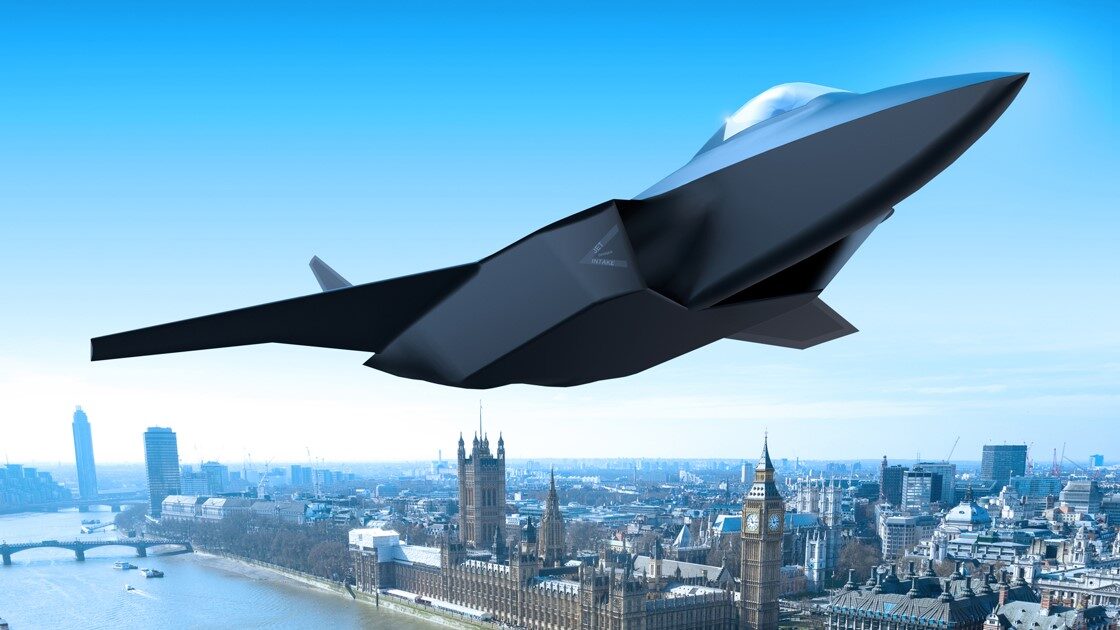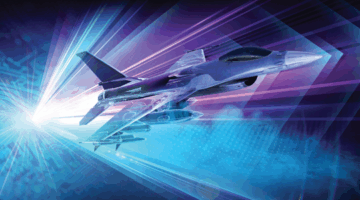
WARTON, United Kingdom — BAE Systems executives this week expressed confidence that the Global Combat Air Platform (GCAP), currently in development with Italy and Japan, will achieve its projected in-service date of 2035, with a “manned, supersonic and low observable jet” demonstrator taking flight within the next five years.
And more than that, the company leaders believe they can find an export market of “several hundred” jets globally.
Meeting with the media at BAE Systems’ assembly plant in Warton, Lancashire, Herman Claesen, BAE Systems’ Future Combat Air System Managing Director, called the international export of GCAP a “key feature” in the wider FCAS effort. (GCAP is nestled under the UK’s FCAS program.)
“This is a requirement endorsed by the [UK] Prime Minister [in a joint leader statement] in December 2022 for multiple reasons. If you look at Typhoon, you forge and encourage and strengthen international relationships through these programs,” he stated. “If we deliver solutions in 2035, we’ll be the first mover and one of the first western nations outside the US to deliver sixth-generation [aircraft].
“The US is doing their work as well and no doubt we’ll learn more about what’s going on over next 10 years,” he added before suggesting GCAP will need to provide greater operational capacity than Lockheed Martin’s F-35 which is expected to be flying through until the 2080s.
RELATED: FCAS? SCAF? Tempest? Explaining Europe’s sixth-generation fighter efforts
“We are in the middle of refreshing our export analysis to determine how many we can sell. That is being fed back into a concept phase which is also being done now. And then we can offer solutions for export customers depending on what they need. But right now, our focus is on the tri-national requirements,” Claesen said before suggesting BAE Systems could expect to sell “several hundred” platforms beyond sales to the UK, Italy and Japan.
“We need to confirm the exact numbers once we’ve gone through the analysis,” he added, before noting that British, Italian and Japanese GCAP variants could be modified for certain international customers.
Claesen also said financial discussions regarding the capital expenditure of each member nation remain ongoing. “This is one of many conversations we are having as we speak. OBC2 [Outline Business Case 2] is next year and we will be seeking another level in confirmation then.
“Sharing the [financial] burden internationally is the right thing to do and it’s a fundamental strategy of the UK government to proceed with international partners. Our discussions and our engagements with Japan and Italy are incredibly positive, they’re highly energized and they’re progressing at pace. It feels like we permanently have people working in Japan, they’re flying in and out all the time of course, as well as Italy and vice versa.”
Upcoming Competition With French SCAF
Claesen also addressed FCAS/GCAP competition in the form of the pan-European FCAS/SCAF effort being pursued by France, Germany and Spain.
“I think we’ve laid out some really strong timelines and we are seeing different timelines to SCAF — we know they are talking more about 2040 or thereabouts [for in-service date]. I think our structure is a lot more collaborative and a lot more contemporary as an international defense cooperation program.”
Claesen took an opportunity to throw a rheotrical punch at BAE’s traditional competitor, emphasizing that his company has a long history of multinational collaboration — then stating “I don’t think France has got that got that same extent of experience and knowledge, because they’ve never really been in that position.
“As you know, Rafale was done on their own and a lot of the other programs of the past have largely been French national initiatives so they haven’t lost. Of course, they can collaborate. It’s a skill and an experience to do that. Obviously, that comes through quite heavily through the way BAE has approached this. [That cooperation and teaming] chimes well with the Italians and again, Japan very much appreciates that. In fact, our relationship with Japan is incredibly strong,” Claesen said.
As to whether new partners could joint GCAP, Claesen said the company is staying “connected” with Sweden,” but indicated nothing was on the horizon. (The commander of the Swedish Air Force last month told media that his service does “not have an immediate need for a new fighter.”)
Interestingly, Claesen also brought up the potential of Saudi Arabia’s participation. That is notable, as in March, a Saudi announcement stated that the Kingdom was joining FCAS — only for the UK government to walk that back hours later.
“We also want to continue our 55 year relationship with Saudi Arabia and governments are starting to explore those conversations. These are very early-day conversations but when we are clear about Saudi requirements, we can see how that fits in,” Claesen said. “We need to have more conversations with the Kingdom. And it needs to be right for them in the same way as it needs to be right for us. But without a doubt, we’re very keen to continue to maintain the relationship and we see combat air capability as being an essential part of that strategic, long term relationship.”
Flying Demonstrator Test In Five Years
Describing focus on low-observable shaping and internal weapons bay design, Claesen explained how the GCAP Flying Demonstrator continues to make “good progress.”
He described a total of 60 “ongoing technology demonstration projects” as well as concept assessment work which includes a combat air demonstration. This, he confirmed, will feature a “manned, supersonic and low observable jet which will fly within the next five years.”
“We are meeting milestones this year. Stealth testing since the Taranis [UCAV project] has been a huge investment area [for] us. We believe we have a very strong capability in the UK and continue to invest in it.”
However, Claesen conceded the GCAP air vehicle could look very different to the Flying Demonstrator.
“The important thing for the Flying Demonstrator is it needs to exercise the weapons bay. This is notoriously difficult to design. You have to protect your stealth characteristics,” he said, while noting the company is open to either a single or twin-tailed air frame design.
“We want to test that capability using some of the advanced manufacturing techniques and exercising the digital thinking. The pace at which we can spin out concepts is so much faster than we did in the past. We can test virtually much quicker, which de-risks the program. So that work is continuing and as soon as we are in a position to tell you more about the shape, I’d be delighted to.”
Finally, Claesen described the system of systems approach being pursued for the UK’s sovereign FCAS capability, which will include GCAP as a “core platform,” supported by a family of sensors, effectors and networking solutions.
However, Claesen also said requirement for a collaborative combat aircraft (CCA) or “adjunct system” had not yet been confirmed.
“We’re exploring the operational requirements and I think that’s quite important within the systems of systems context, because people get quite hooked on other unmanned systems and the concept of a loyal wingman,” he said. “But it needs to make operational sense. And if you look at what’s going on with low orbit satellites and HALE [high altitude long endurance] systems, you’ve got to look at it as a total system solution to determine what we want from an unmanned system. The option is absolutely there.
“One of the things that we have in the UK is some really fantastic facilities, where we can run these operational scenarios and test the boundaries of concepts to determine what the best possible answer is. And that work continues as part of the contract and if that means we need to do a demonstrator, then yes we will look at them,” Claesen concluded.

